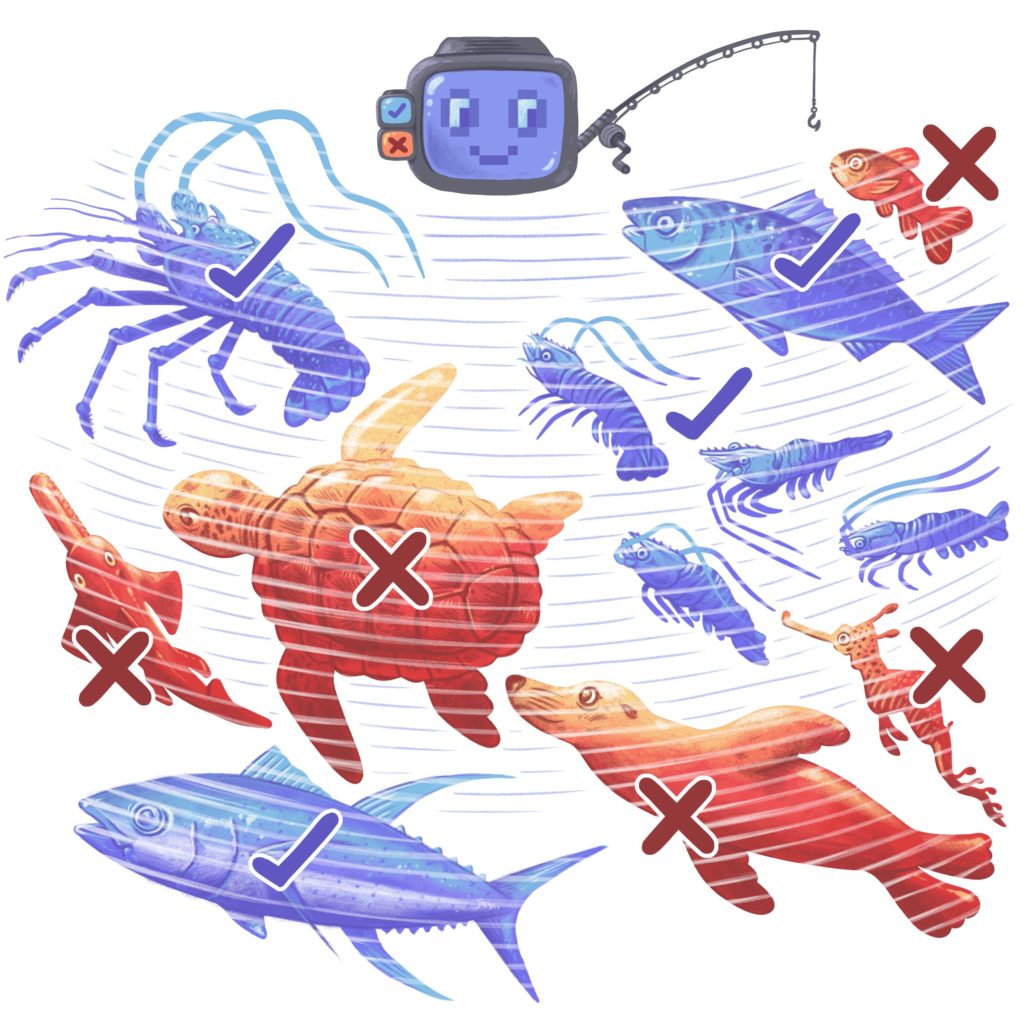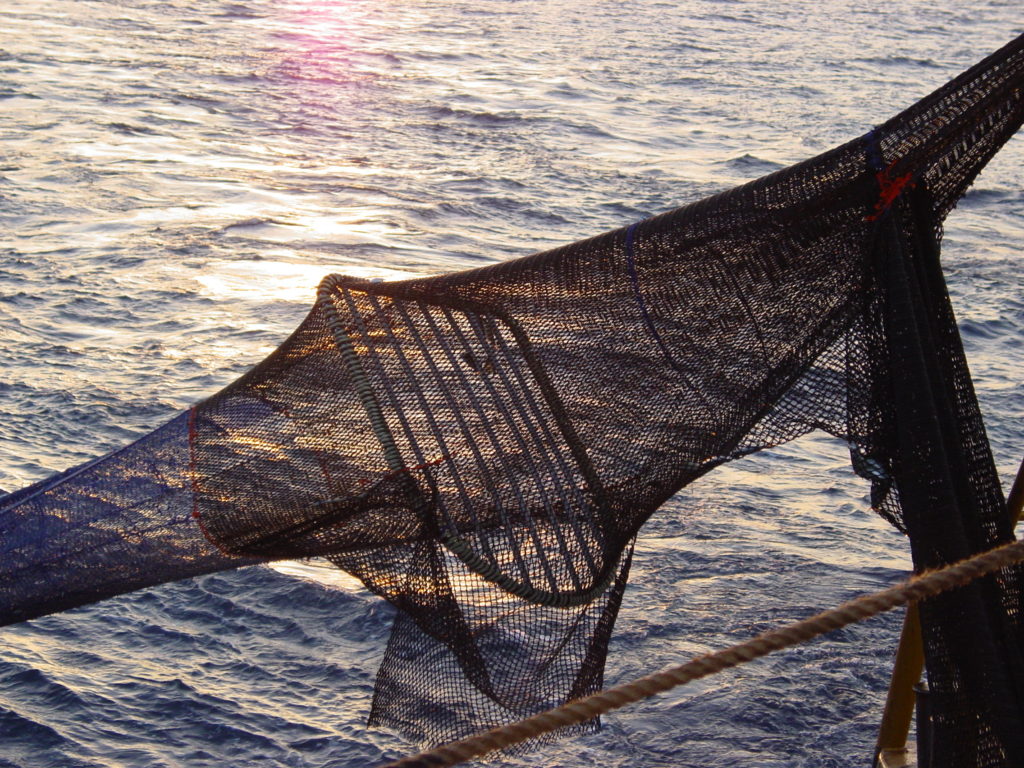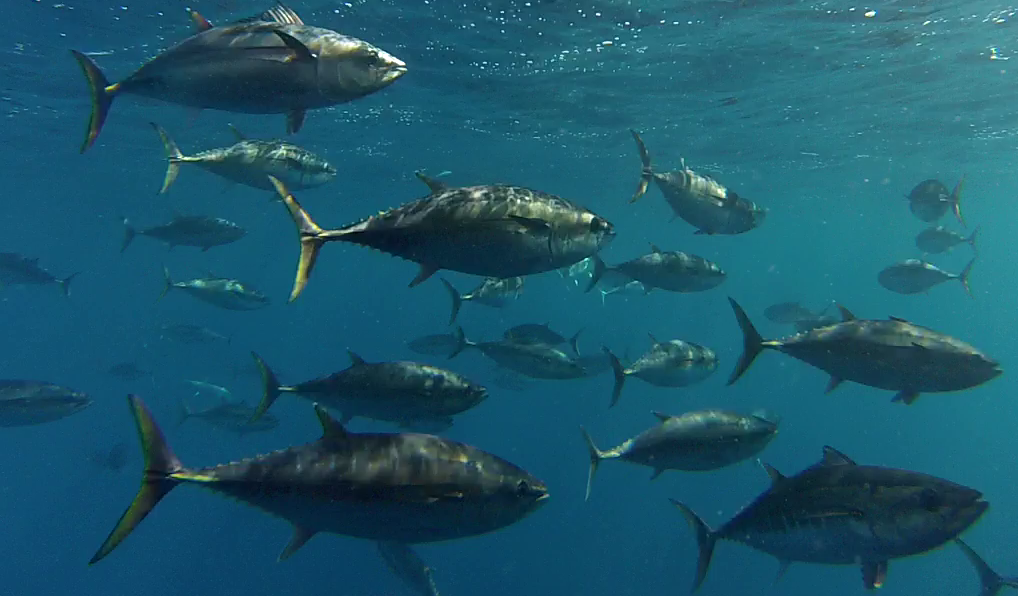We asked for your ideas about technologies to create healthy and sustainable oceans as part of our Word Oceans Day competition. And you didn’t disappoint.
We announced the first winner on World Oceans Day. And our second winner is Simon Bunker. Simon had a great suggestion for approaches to sustainable fishing.
“With my eight-year-old son Josh, we prototyped using machine learning with Google Teachable Machine to build a smart fishing boat. This would automatically avoid catching endangered fish and stop catching allowed fish when it reaches a limit.”
There’s nothing fishy about this suggestion! Our fisheries scientists have been working for decades to support sustainable fishing in Australia and beyond. And new technologies are central to maintaining this.

Simon had the fantastic idea to build a smart fishing boat. Illustration by Campbell Whyte.
We asked Perth-based illustrator Campbell Whyte to interpret Simon’s idea. And, we asked our experts to reflect on this concept and share more about emerging tech oppor-tuna-ties for sustainable fishing.
Sustainable fishing – a shared goal
While Australian fisheries are some of the best managed in the world, we do face a unique set of challenges. Our continent is distinct both in marine biodiversity and the number of different fisheries.
One of our senior research scientists with our Oceans and Atmosphere team Dr Rich Little said we need to protect our unique and vulnerable species alongside using our seafood resources effectively. This is central to our fishing industries and research that supports it.
“Partnerships between researchers like us, regulators who ensure compliance to fishing rules and fishers themselves are easy. We are all striving for the same goal. That is sustainable fisheries across the generations alongside thriving ocean ecosystems,” Rich said.
“Non-target fish or marine creatures captured during commercial fishing are called ‘bycatch’. Reducing bycatch is a top priority for science and industry alike.
“The role of technologies like artificial intelligence (AI) and machine learning will be central to best fishing practices in the future. And will help to reduce waste in fisheries,” Rich said.
Of course, bycatch is not a new concept. There is technology in fisheries to help manage this issue. For example, in prawn trawl fisheries, it is standard to have turtle exclusion devices fitted to trawl nets. In Australia’s southern net fisheries, other bycatch reduction devices are also used as standard.
But there is more we can do. Rich and his colleagues have been developing new technologies to support sustainable fishing.

Turtle Excluder Device (TED) installed in a fishing net. Photo: Australian Fisheries Management Authority.
Computer says no (more data gaps)
Our Marine Visual Technologies team are working with AI to detect and count fish onboard fishing vessels. Senior research scientist Dr Geoff Tuck said camera technologies that provide real-time information can have multiple benefits for fisheries.
“A smart system with a well-trained algorithm can automatically count the number of each fish species caught. And when combined with tracking devices will give consumers confidence about where fish came from and whether they were caught in a sustainable way,” Geoff said.
A common tool for assessing the number of fish in the sea is to gather data on the length of fish. Why? Because if fish length is decreasing you might be catching younger fish and depleting the breeding population.
“Artificial intelligence can help here. Provided a multi-camera system can accurately capture fish size, AI can do the rest. Creating reports on the total catch that feed into quotas and regulatory processes,” Geoff said.
Make it count
Gathering information in real time on the number of fish in the sea for on-the-spot decision making, is a fair way off. However, technology is being used to sharpen up our stock estimates. We’re using genetic fingerprinting, parent and half-sibling genetic detection tests to create accurate counts of young fish and spawning adults. We feed this information into stock assessments and science-based harvest strategies.
Ann Preece from our southern bluefin tuna research team said this is a new frontier in measuring and tracking fish numbers.
“It’s key information for scientific advice for management. In the past we used physical tags and relied on fishers to tell us when a tagged fish showed up again. Now we can use a fish’s DNA as an invisible and permanent tag. And our tag monitoring programs provide estimates of the total number of fish in the population.
“DNA technologies are changing the game in understanding populations of fish and other species. This will lead to better management of fish stocks plus better information about threatened, vulnerable and protected species,” Ann said.
We’ve been using DNA technology to count juvenile southern bluefin tuna and adult white sharks.

Southern Bluefin Tuna swimming in school underwater.
So, what about Simon’s smart boat?
It’s fair to say Dr Rich is a big fan of this idea. He said “using technology in this way, to ensure sustainable fisheries, is my vision”. We’ve landed a keen supporter on this one.
“The concept is great. A one-stop-shop for sustainable fishing would protect vulnerable species. It would also ensure we make the most out of this scarce resource and tell fishers where and when to go fishing,” Rich said.
“If we integrated this into market technologies that respond to consumer demand, then we would get the most value out of the fish.”
Well done Simon. And good luck with your tech.


11th June 2020 at 8:15 pm
Splendid! This is surely the wayt forward in sustainable fishing.
11th June 2020 at 6:33 pm
A smart boat? Great. A smart fleet working off a common real-time platform? Even better. So that’s something to aim for. Meanwhile, AI/catch-image assisted size trend tracking is potentially a very powerful tool to decide when “enough is enough”.
Related question, how come I still see Orange Roughy being sold in Australia? I thought it was shown a decade back that they are about as unsustainable a fish stock as we have. Maybe I missed something?
11th June 2020 at 5:28 pm
Great research op – the offshore fisheries certainly needs guidance – keep up the good work.